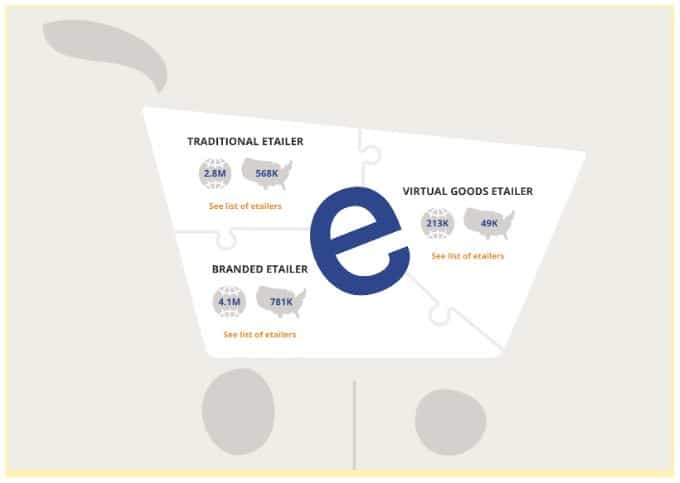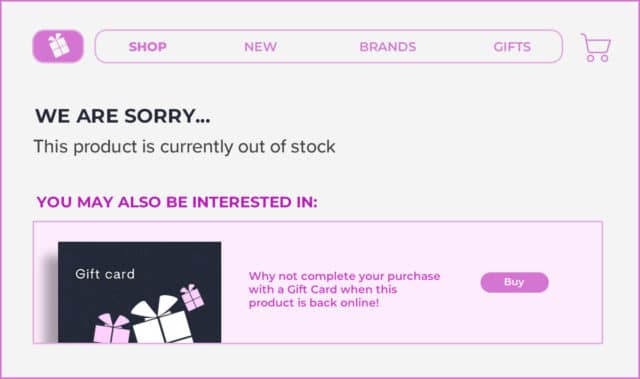Why is now the time for brands to engage in ecommerce collaboration? As one writer portends:
“The next five years of growth in online shopping is happening right now — over the course of weeks. Revolutionary changes like this often result in a fissure between companies that are equipped to handle shifts with agility and speed and those that are too slow to adapt.”
While some might find this statement charged at best or reductive at worst, the claim that these changes are revolutionary is nothing short of exact. From changes in shopping behavior to disruptions in supply chain and fulfillment turnaround, nearly every touchpoint of the ecommerce journey is impacted.
Companies like Amazon, Walmart and Target are readily positioned to rev up their ecommerce operations and maximize the benefits from this unprecedented growth in online consumer shopping. Meanwhile, ecommerce stores that operate with lean teams and leaner models like DTC are feeling the brunt of these challenges.
How Can Ecommerce Collaboration Help?
“It is not in numbers, but in unity, that our great strength lies, yet our present numbers are sufficient to repel the force of all the world.” – Thomas Paine
Who better to invoke when it comes to “revolutionary changes” than a revolutionary himself? Sure, we aren’t talking red coats and settlers, but the metaphor still maps on pretty neatly. When it comes to the frontlines of ecommerce, online merchants are up against tech giants and legacy retailers. It feels as though the sun never sets on these empires, at least not according to their essential workers.
But when you count the number of etailers in the industry, ask what it might look like if greater unity existed between them? Not even in spite of marketplaces, but despite them. How can we engage in ecommerce collaboration to support fellow merchants or partner for meaningful collaboration?

While we can’t imagine all the possibilities that could exist, we did pull together five different suggestions as a starting point.
1. Buy Directly From Brands and Small-Medium Sized Etailers
This first one is a no-brainer. It’s something that we’re each responsible for as individual consumers, and can’t be stressed enough.
As we’ve already laid out, the behemoths in ecommerce are able to gobble up swaths of consumer spending. As if having a household name weren’t enough to inspire customer confidence or loyalty, these companies also promise a better experience, greater convenience, and the best available deal.
But if you have been shopping with any of them (no judgment, here), you know that this just isn’t the case. Between stockout notifications that don’t come until checkout and awaiting refunds on charges that were already applied to items that went out of stock after you hit purchase, the experience isn’t smoother, more convenient, or cheaper.
We’re not suggesting that you abandon your go-to grocer (especially if they’re local). But for one-off items that you probably used to pick up on the way home from work, such as coffee or wine, why not purchase directly from the source? When it comes to inventory, they likely have a wider selection available.
In some cases, these brands line the digital marketplace shelves anyway. Meanwhile, smaller online retailers are category experts. They aren’t thinking about how to bring you a little bit of everything. They’re focused on providing the best on something specific.
In the end, it’s about spending money where it will have the most impact and leaning into the choices consumers have. If you’re not sure where to get started, Shopify launched an app to help people find local businesses to support. Buying from online brands and smaller retailers means buying from someone you can trust.
2. Pledge Support for Future Purchases with Gift Cards
Another simple solution that leverages your power as a consumer. If you haven’t made the most of this easy tactic that can help inject cash-flow into your online store, check out this article on how to boost sales of ecommmerce gift cards.
The beauty of gift cards, besides that immediate infusion of cash, is that cost virtually nothing to the store providing them, especially if they’re digital certificates. Stores can use these as a way to keep buyers from abandoning their carts when certain products are unavailable. Purchasing gift cards is your way to show support to others who are facing stockout challenges.

3. Join an Online Community of Professionals for Ecommerce Collaboration
Alright, let’s get into the nitty gritty of how teams can support one another through ecommerce collaboration. Beyond what you can do as a consumer, the resources and insight you offer as an ecommerce professional are bountiful. Although a light is starting to appear at the end of the tunnel, teams are still working to overcome challenges.
Online communities offer the unique opportunity to see what others in your position are doing. These professional groups give the chance to ask questions that keep you up at night and explore solutions. Or perhaps you and your colleagues came up with a novel merchandising idea that you think other ecommerce teams should consider trying out! Whether gaining knowledge or sharing insights, these online networks are powerful places for ecommerce professionals to come together.
Ecomm Alliance was created for this exact purpose. If you work in ecommerce, consider joining the Ecomm Alliance Slack community. Membership is based on a very brief application and reserved for those who bring expertise and direct ecommerce experience to the table. In other words, this isn’t a place for selling and self-promotion. It’s a space for those who are serious about leveling up together and helping each other out. Apply here if this sounds like something you’re looking for!




